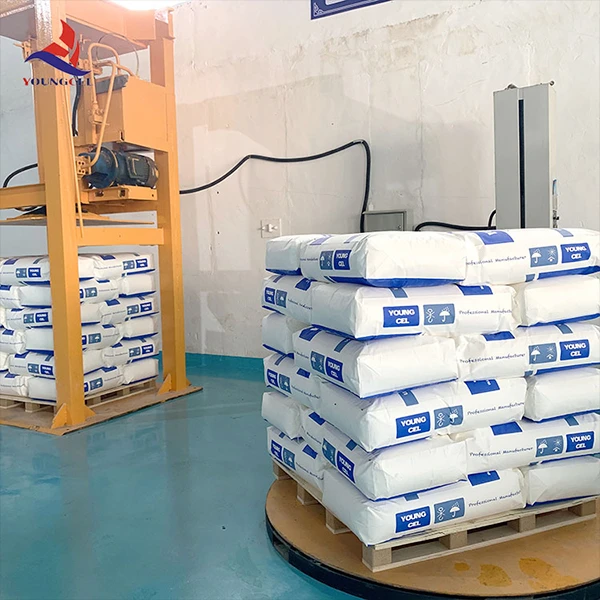Understanding Carboxymethyl Cellulose Its Uses and Importance
Carboxymethyl cellulose (CMC) is a versatile and widely used cellulose derivative that has garnered significant attention in various industries due to its unique properties. As a natural polymer derived from cellulose, which is a fundamental component of plant cell walls, CMC exhibits remarkable functionalities that enhance its applicability in diverse fields such as food, pharmaceuticals, cosmetics, and industrial applications.
What is Carboxymethyl Cellulose?
Carboxymethyl cellulose is produced by the alkaline treatment of cellulose, resulting in the substitution of hydroxyl groups on the cellulose chain with carboxymethyl groups. This modification imparts excellent solubility in water, forming a viscous gel or solution that can be adjusted according to the degree of substitution and the molecular weight of the cellulose. CMC is a white, odorless powder that is non-toxic and biodegradable, making it an environmentally friendly choice for various applications.
Applications of CMC
1. Food Industry CMC is commonly used as a food additive due to its thickening, gelling, and stabilizing properties. It is found in products like sauces, dressings, ice creams, and bakery goods. By improving texture and preventing separation of ingredients, CMC enhances the overall quality of food products. Additionally, CMC can serve as a fat replacer in low-calorie food formulations, aiding in weight management without compromising taste.
carboxymethyl cellulose

2. Pharmaceuticals In the pharmaceutical industry, CMC plays a crucial role as a binder and disintegrant in tablet formulations. Its ability to dissolve in water makes it an excellent medium for controlled drug release and for ensuring the uniform distribution of active ingredients. CMC is also utilized in the production of various medicinal products such as suspensions and emulsions, enhancing the stability and bioavailability of the drugs.
3. Cosmetics The cosmetic industry has embraced CMC for its thickening and stabilizing ability, particularly in lotions, creams, and gels. It helps improve the texture of cosmetic formulations and enhances the feel of products, making them more appealing to consumers. Additionally, CMC is often used in hair care products to provide film-forming properties, improving product performance and user experience.
4. Industrial Applications Beyond food and personal care, CMC finds applications in various industrial processes. It is used in the textile industry as a sizing agent, helping to control the viscosity of dye baths and improve the quality of the finished fabric. In the paper industry, CMC serves as a coating and binding agent, enhancing the smoothness and printability of paper products. Its thickening properties also render it useful in the construction industry for producing adhesives and protective coatings.
Conclusion
Carboxymethyl cellulose stands out as a multifunctional compound with a broad spectrum of applications across various industries. Its ability to improve the texture, stability, and performance of products makes it invaluable in modern formulations. Considering its natural origin, biodegradable nature, and non-toxic profile, CMC is not only an effective ingredient but also a sustainable choice for manufacturers committed to environmental responsibility. As research continues to uncover new applications and methodologies involving CMC, its significance in both existing and emerging markets is likely to grow, ensuring its place as an essential additive in numerous sectors.
-
Premium Detergent Grade HPMC Hydroxypropyl Methylcellulose ThickenerNewsSep.01,2025
-
Premium Detergent Grade HPMC Hydroxypropyl Methylcellulose: Superior Thickening & StabilityNewsAug.31,2025
-
HEC 100000 Hydroxyethylcellulose for Paint | Superior ThickeningNewsAug.30,2025
-
Wall Putty Rdp Powder Packaging DesignNewsAug.29,2025
-
Introduction to Hpmc Hydroxypropyl Methyl CellulosNewsAug.29,2025
-
Hpmc Industri Grade IntegrationNewsAug.29,2025




